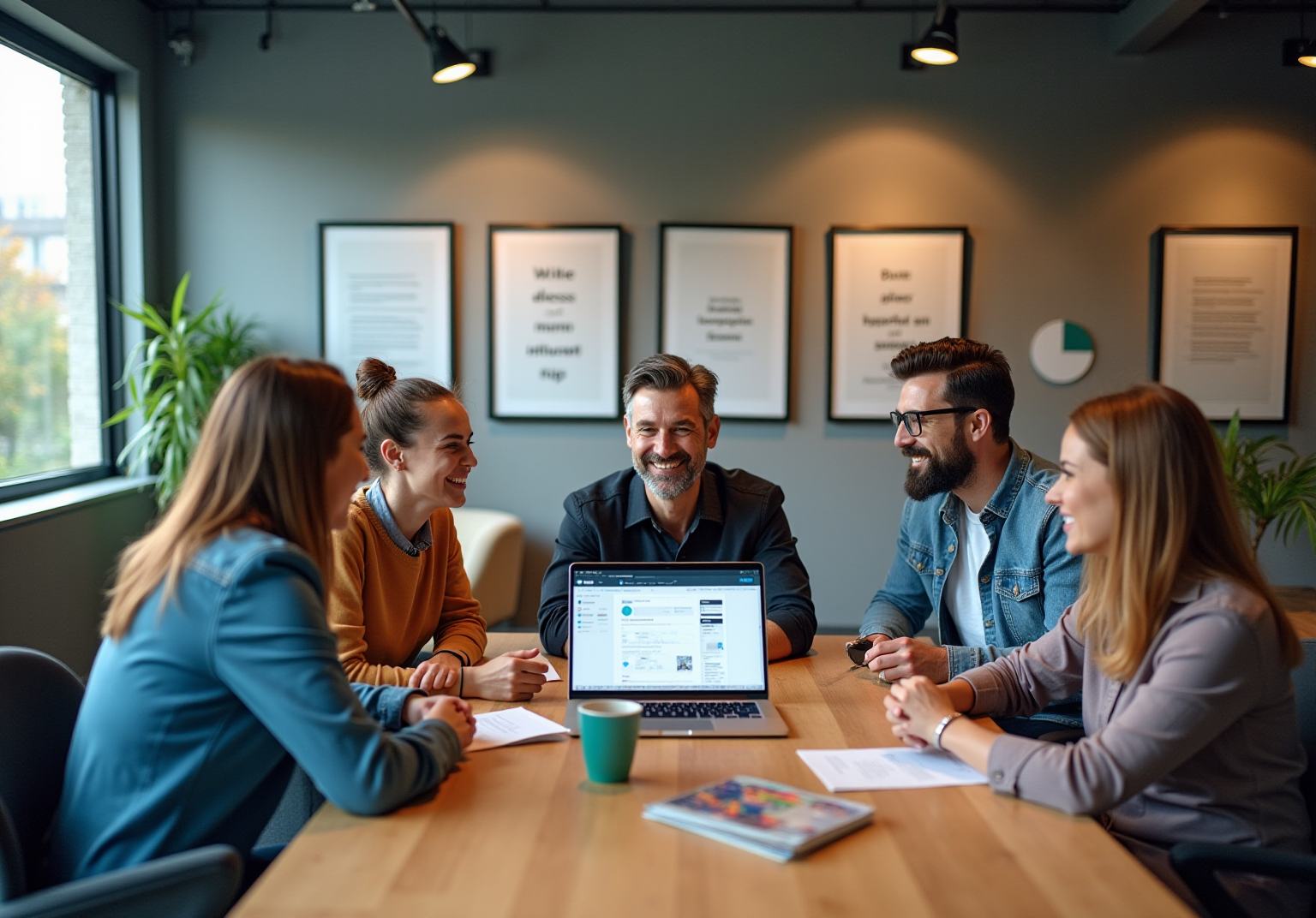
Streamlined Onboarding Processes
|
October 17, 2025
|
7 Key Steps for a Standard Operating Procedure for Onboarding
Overview
You might be wondering how to create a standard operating procedure (SOP) for onboarding new employees effectively. Well, the article "7 Key Steps for a Standard Operating Procedure for Onboarding" dives into this very topic! It highlights that having a well-structured SOP can really enhance the onboarding experience. In fact, it can boost new-hire retention rates by up to 82% and ramp up productivity by 70%!
How does it do that? By providing clear guidelines, consistent training, and support mechanisms that help new employees integrate smoothly into the organization. So, let’s explore how you can implement this in your workplace!
Key Highlights:
- SowFlow simplifies the creation of standard operating procedures (SOPs) for onboarding, enhancing the integration experience for new hires.
- Organised orientation can lead to an 82% boost in new-hire retention and a 70% increase in productivity.
- Clear SOPs help reduce the learning curve for newcomers, allowing them to contribute effectively from day one.
- Structured training programmes ensure consistency across employee onboarding, leading to a 50% increase in productivity.
- Feedback mechanisms during onboarding can improve retention rates by 82% and productivity by 70%.
- Mentorship programmes provide new employees with support, making the transition smoother and more enjoyable.
- Cultural orientation aligns new hires with company values, enhancing engagement and retention.
- Compliance training is essential for ensuring new hires understand legal obligations, reducing risks for the organisation.
- Performance metrics help evaluate the success of onboarding programmes, guiding improvements for future recruits.
- Continuous learning fosters development beyond initial onboarding, adapting to changing job demands and boosting employee satisfaction.
Introduction
You might be wondering why creating an effective onboarding process is such a big deal for organizations. Well, it’s essential for retaining talent and boosting productivity! A well-structured standard operating procedure (SOP) for onboarding not only clarifies roles and responsibilities but also enhances the integration experience for new hires.
But here’s the challenge: how can companies ensure that their onboarding processes are not only efficient but also engaging and supportive? In this article, we’ll explore seven key steps to streamline onboarding SOPs, using tools like SowFlow to create a seamless transition for new employees and ultimately drive organizational success.
Now, let’s dive into how you can make onboarding a breeze!
SowFlow: Streamlined SOP Creation for Efficient Employee Onboarding
You might be wondering how to make the smoother for new staff. Well, SowFlow is here to help! It offers an intuitive platform designed to simplify the development of the , specifically for integrating new hires. With SowFlow's , you can quickly whip up comprehensive guides that lay out the integration process, ensuring that new employees have immediate access to all the .
This approach not only saves you valuable time but also significantly , making it more organized and efficient. Did you know that organized orientation can lead to an 82% boost in and a 70% increase in productivity? That really underscores how crucial clearly defined SOPs are for helping staff succeed.
Organizations that use documentation tools for training often report improved clarity and consistency, which are key for aligning new employees with your company's goals and culture. As HR experts point out, are increasingly seen as a strategic advantage. So, integrating as the standard operating procedure for onboarding is not just a nice-to-have; it’s a vital part of making sure your staff integration is a success. Now, let’s dive into how you can implement these tools effectively!
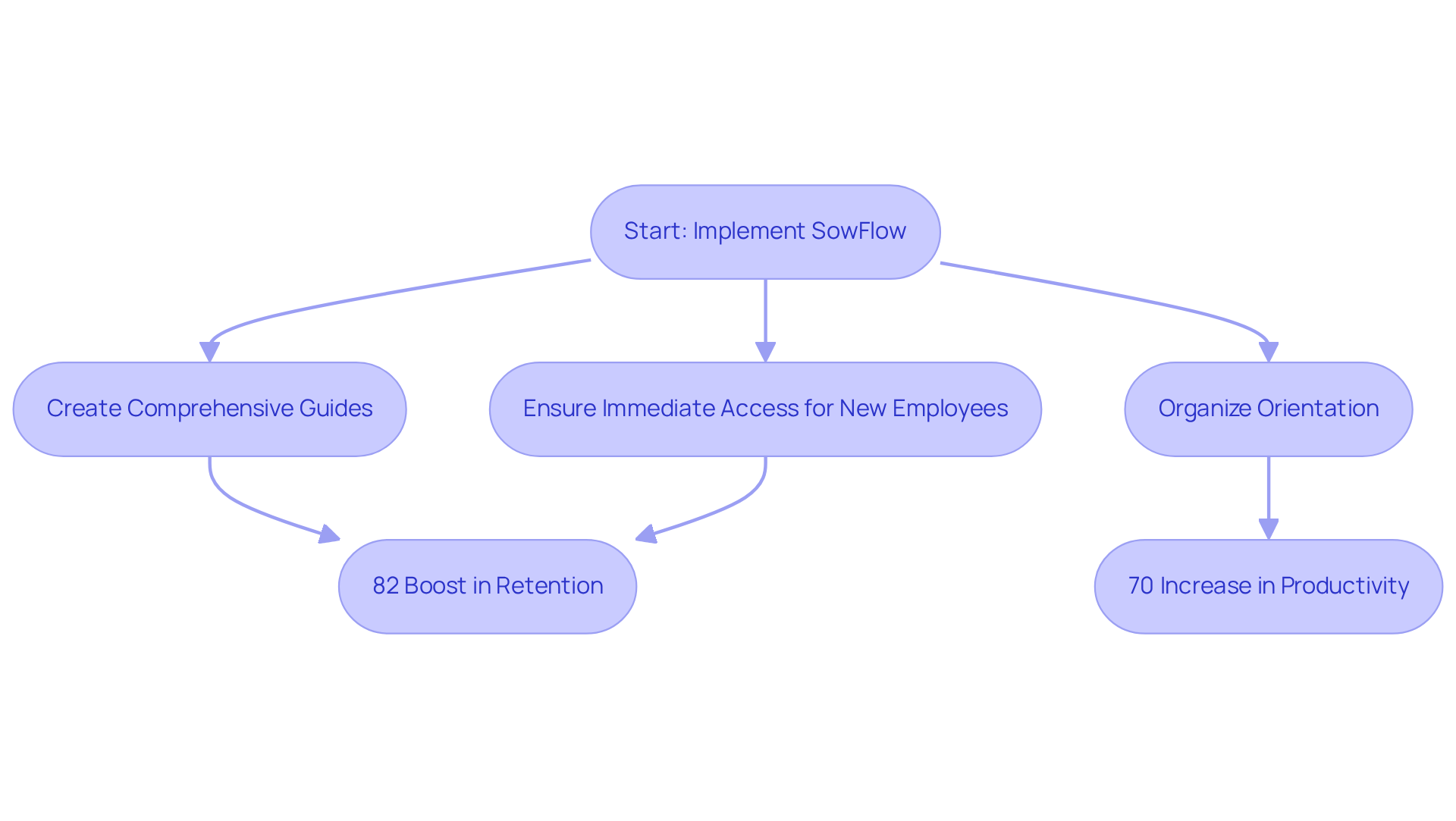
Standard Operating Procedures: Defining Roles and Responsibilities for New Hires
You might be wondering how to make the onboarding of new employees smoother and more effective. Creating a that clearly outlines roles and responsibilities is a game changer. These documents serve as a roadmap, detailing what’s expected from each team member and showing how they fit into the bigger picture. When organizations provide this clarity, they can really cut down the learning curve for newcomers, helping them hit the ground running from day one.
Did you know that companies with well-defined SOPs see a notable boost in new ? can lead to retention rates soaring by as much as 82%! When staff members have a clear understanding of their roles, they feel more supported and prepared, which is crucial for their long-term success. Organizational psychologists highlight that not only enhances individual performance but also fosters a cohesive team atmosphere, driving overall efficiency.
With a staggering 37.9% of employees leaving within their first year, it’s clear that are a must. Ryan Bradshaw points out that the orientation process isn’t just an HR checkbox; it’s a strategic move that can significantly impact retention, productivity, and the health of the organization as a whole. Plus, 94% of employees would stick around longer if their company invested in their . This underscores just how important the standard operating procedure for onboarding is for organized integration.
Now, let’s talk about remote employees. A significant 36% found the orientation process confusing, which highlights the need for a standard operating procedure for onboarding to address these challenges effectively. As Anastasia Masadi, a Product Owner, puts it: " has been a game changer in the way we document work and deliver to our clients. I don’t have to take each screenshot separately, and I don’t even have to leave the browser while I’m creating SOPs and training materials. SowFlow gave me time from my life back." This shows how SowFlow empowers teams to on the fly, and simplifying the documentation process.
So, if you want to maximize the benefits of your orientation process, consider adopting a standard operating procedure for onboarding and tools like SowFlow to ensure clarity and support for your new employees. Trust me, it’ll make a world of difference!
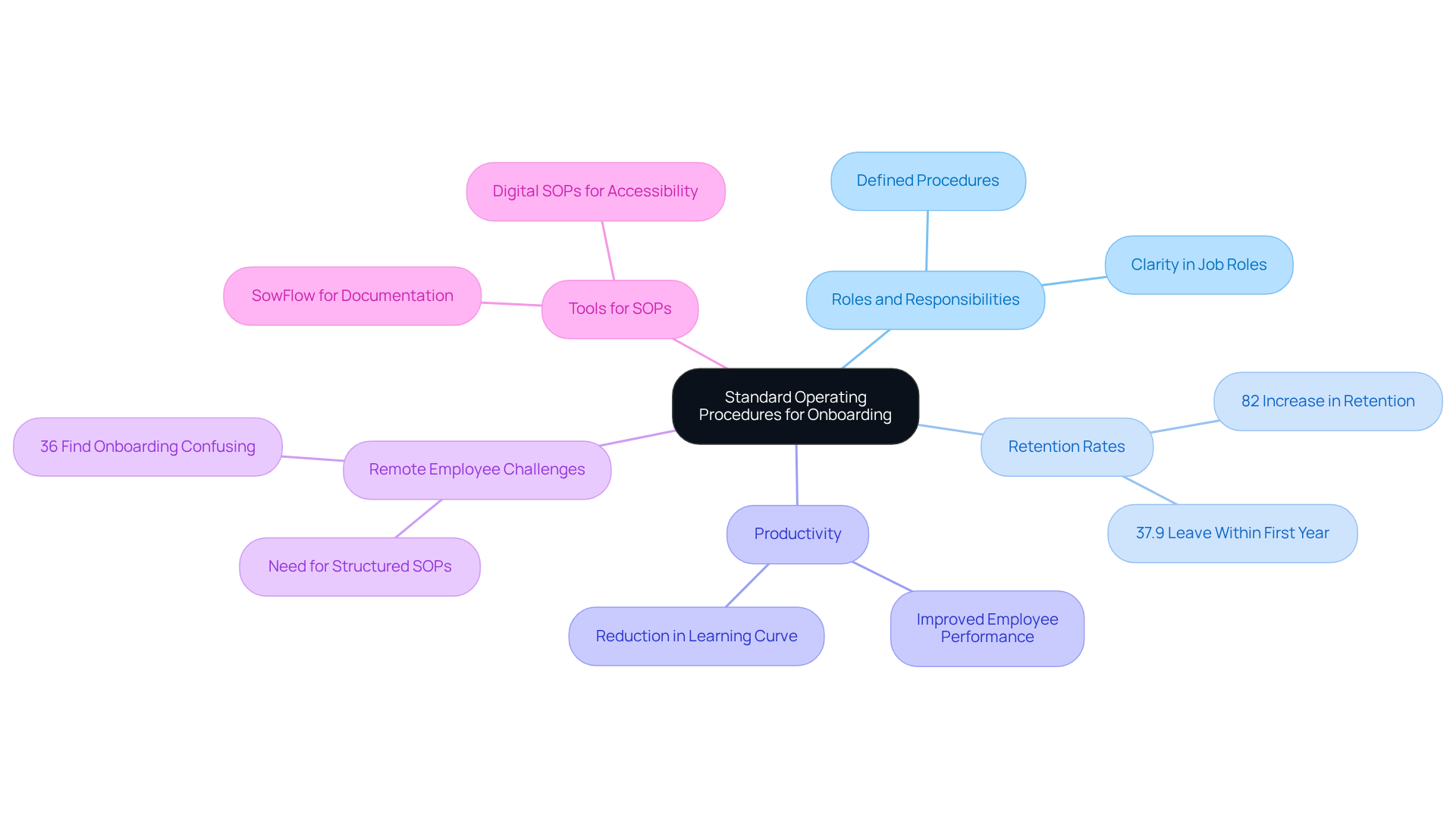
Structured Training Programs: Ensuring Consistency in Employee Onboarding
You might be wondering just how important are for new employees. Well, they’re absolutely crucial! Equipping everyone with the same foundational knowledge and skills is key to maintaining quality across the board. Did you know that a can really in orientation? In fact, companies with a standard operating procedure for onboarding see a whopping 50% increase in productivity among new hires!
Now, let’s talk about . With its documentation features, organizations can create that are not only easy to access but also frequently updated. This means newcomers are always learning from the latest resources. For example, teams can whip up that reflect the most current procedures and policies, which helps build a more engaged and skilled workforce.
And here’s something to think about: 76% of HR leaders believe that a . This really highlights how the standard operating procedure for onboarding, through a consistent training strategy, can lower turnover rates and boost overall job satisfaction. So, why not explore how you can implement these ?
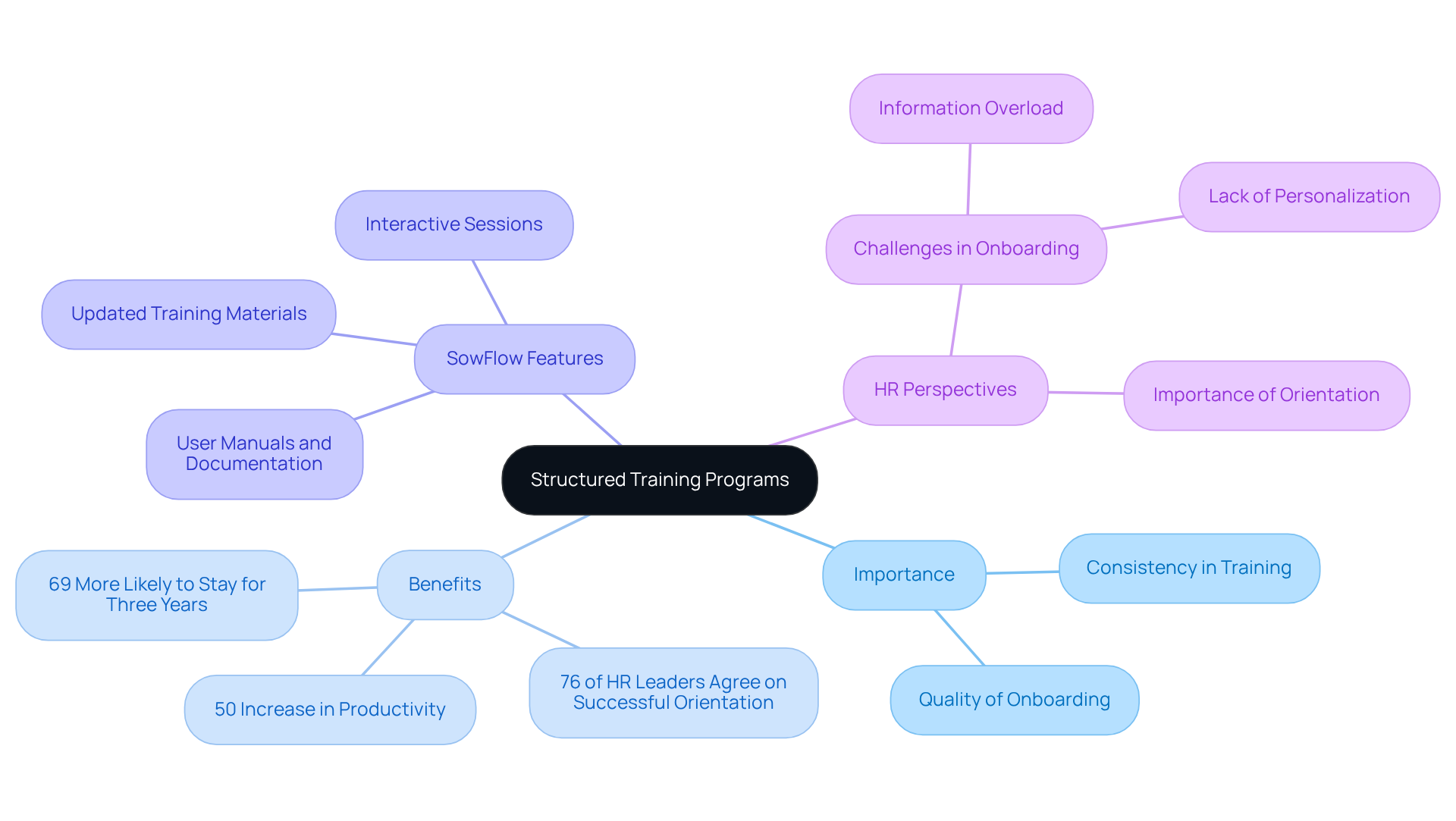
Technology Integration: Enhancing Engagement in the Onboarding Process
You might be wondering how technology can enhance the experience for new employees when incorporated into the . Well, tools like make it super easy for staff to document workflows and access training materials right from their browsers. This not only simplifies the integration process but also follows the standard operating procedure for onboarding, encouraging newcomers to take an active role in their learning. By allowing staff to oversee their own integration, organizations can and accountability among new recruits.
As Anastasia Masadi, a Product Owner, puts it, "SowFlow has been a game changer in the way we document work and deliver to our clients. I do not have to take each screenshot separately, and do not even have to leave the browser while I am creating SOPs and training materials. SowFlow gave me time from my life back."
Research shows that by up to 82%! That's a big deal when it comes to engaging processes. often incorporate it into their standard operating procedure for onboarding, leading to . For instance, those who implement a standard operating procedure for onboarding find that than those without such guidance.
Industry leaders are really emphasizing the need to update orientation practices. One expert shared, "When executed properly, is truly the key to preparing your whole team for long-term success!" This highlights a growing recognition that digital tools not only enhance the integration experience but also help build a more connected and engaged workforce. By using , businesses can ensure that their integration processes adhere to the standard operating procedure for onboarding, making them not just efficient but also engaging, which leads to better outcomes for both new employees and the organization.

Feedback Mechanisms: Continuously Improving the Onboarding Experience
You might be wondering how can really make a difference in your organization’s orientation experience. Well, let’s dive into it! Gathering perspectives from recent employees is key to spotting both the strengths and weaknesses in your . Research shows that organizations with solid feedback systems enjoy a noticeable . In fact, those that actively seek input during the report a whopping 70% increase in productivity and an 82% improvement in new .
Now, consistently assessing and responding to this feedback allows organizations to tweak their integration programs to meet the evolving needs of new staff. Take Google, for example; they’ve nailed it by weaving structured feedback loops into their induction processes. This includes regular check-ins and surveys that help . This proactive approach not only creates a sense of belonging but also encourages new hires to share their thoughts and suggestions, leading to a more engaged and productive workforce.
So, how can you effectively gather feedback? There are plenty of methods to consider, like:
- Anonymous surveys
- One-on-one interviews
- Focus groups
These tools give new employees the chance to share their opinions openly, providing valuable insights that can drive continuous improvement in . By prioritizing feedback, companies can that evolves alongside their workforce, ensuring that new employees feel welcomed, informed, and ready to hit the ground running!

Mentorship Programs: Supporting New Employees Through Onboarding
You might be wondering how can really make a difference for new hires. Well, implementing these programs can truly enhance the ! By , they that makes navigating their new roles and much easier. Mentors offer , answer questions, and provide that in accordance with the standard operating procedure for onboarding, which ultimately and a lot more enjoyable for everyone involved.
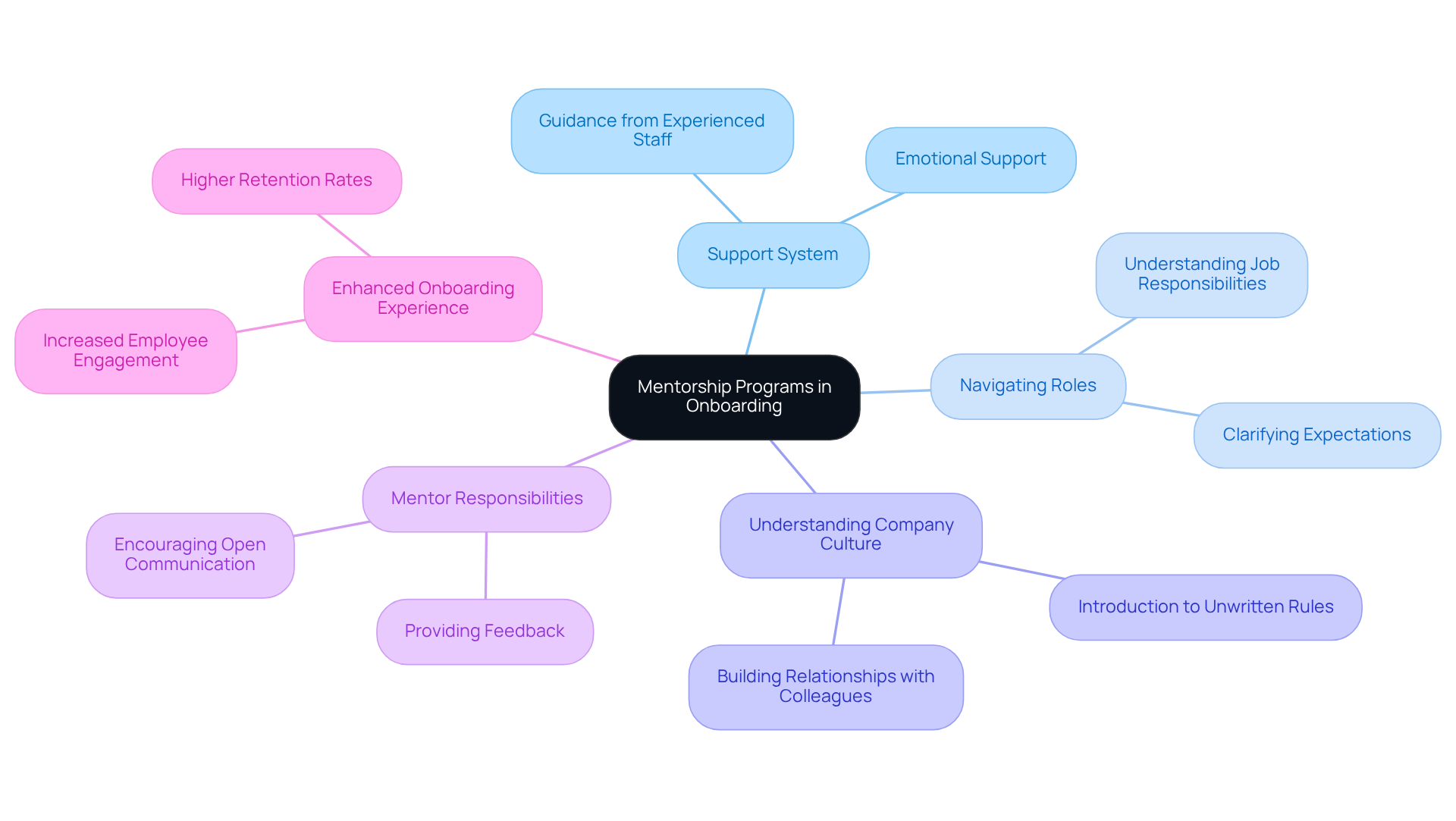
Cultural Orientation: Integrating New Hires into Company Values
is super important when it comes to integrating new employees. It helps them get a grip on the organization's values, mission, and what’s expected of them. So, you might be wondering, how can organizations make this happen? By incorporating cultural orientation into the for onboarding, they can create a welcoming vibe that truly makes newcomers feel like they belong. This connection is key! Studies show that companies with see way higher . In fact, a whopping 93% of employers say a solid is critical for keeping new employees around.
Take Facebook, for example. They run a six-week boot camp that dives deep into both the roles and the company culture. This means new employees can kick off their first projects in just 45 minutes! Pretty cool, right? This approach not only ramps up productivity but also builds trust and independence among new team members.
Now, let’s talk about Eventbrite. Their introduction program is all about connecting new hires with the entire organization, which really helps strengthen brand integrity as the company grows. They have initiatives like and quarterly social events that help newcomers feel integrated into the company culture. It’s no wonder Eventbrite is recognized as one of Fortune's best places to work!
Experts in organizational culture really stress the importance of aligning the standard operating procedure for onboarding with . Grace, a content writer, puts it simply: "Not including it in your onboarding process hinders the overall experience you’re providing to your new employee." By making this alignment, organizations can ensure that new hires not only understand but also embody these values right from the start. This alignment boosts and strengthens the overall culture, leading to better retention and performance.
Integrating company values into the standard operating procedure for onboarding training is essential for , rather than just being a nice-to-have. Organizations that prioritize cultural orientation in their integration processes are in a much better spot to nurture talent and drive long-term success.
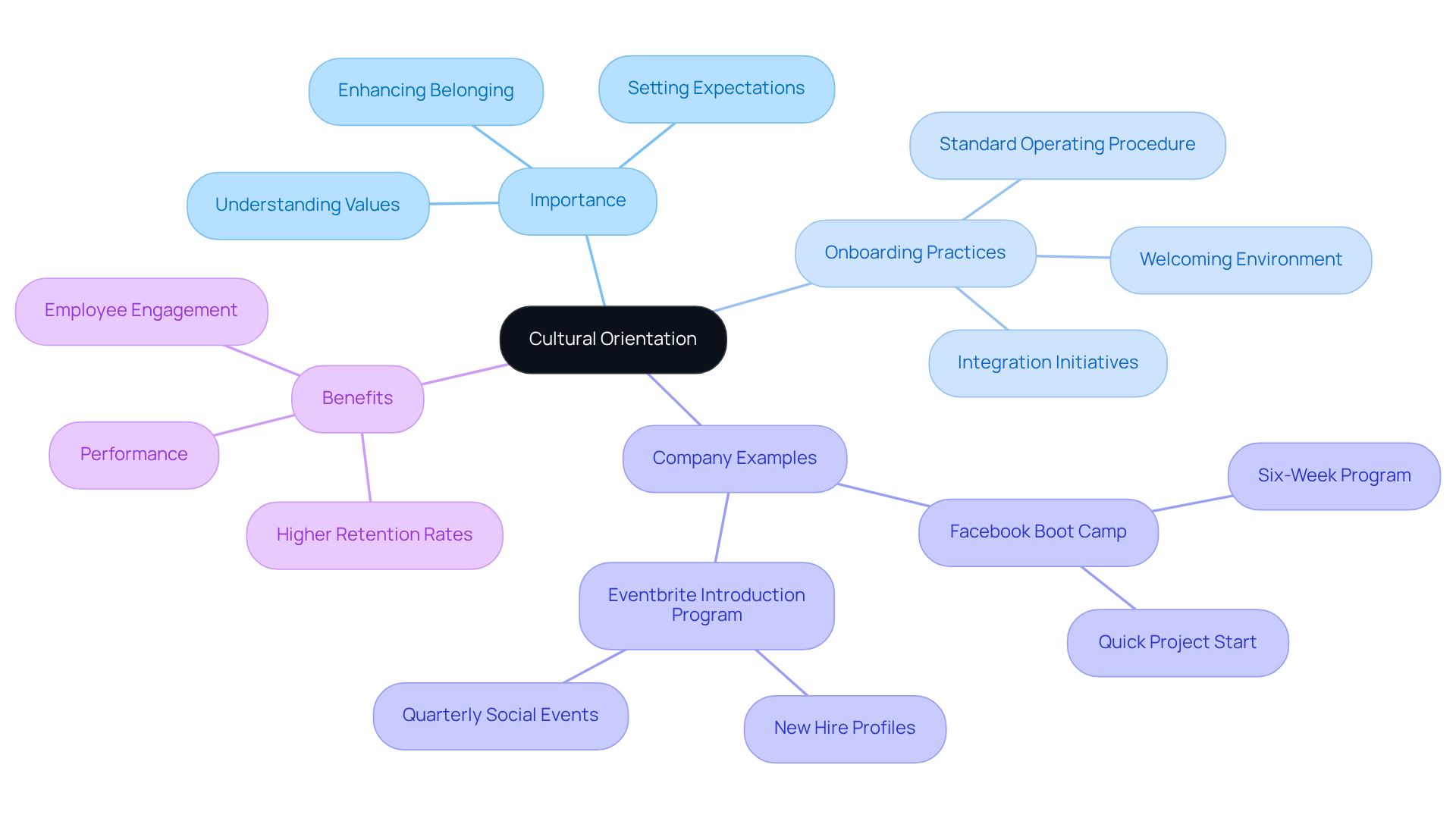
Compliance Training: Ensuring New Hires Understand Legal Requirements
You might be wondering why is such a big deal during the induction process. Well, it’s all about making sure tied to their roles. By weaving compliance training into those initial steps, organizations can really cut down on risks and protect both the company and its team members.
Now, let’s dive into how can change the game. Imagine that are clear and concise! This means new employees can easily access whenever they need to. Plus, organizations can refresh and tweak the documentation on the fly, . Sounds pretty handy, right?

Performance Metrics: Evaluating the Success of Onboarding Programs
You might be wondering how to really gauge the success of your orientation programs. Well, it all starts with setting up clear that give you actionable insights. Think about it:
- show how many new recruits stick around after their first few months.
- tells you how quickly your new team members hit their stride.
- Don’t forget about , which give you a peek into their acclimation experience.
For instance, companies with a can boost new employee retention by a whopping 82% and productivity by over 70%!
Now, consistently checking in on these metrics helps you spot the strengths and weaknesses in your hiring processes, paving the way for . Plus, involving new hires in feedback sessions fosters a culture of open dialogue, allowing you to tweak your orientation strategies to meet their evolving needs.
Speaking of that, have you considered using ? It helps teams quickly document workflows, ensuring that training procedures are not only uniform but also easily accessible. This boosts knowledge sharing and directly contributes to better performance metrics like retention and productivity.
All in all, is a key business process that is part of the for onboarding and plays a significant role in your organization’s success.

Continuous Learning: Fostering Development Beyond Initial Onboarding
You might be wondering why is so important for staff development beyond just the for onboarding. Well, organizations that make ongoing training a priority not only help their teams adapt to changing job demands but also . By using SowFlow's , companies can simplify process standardization and improve , making it easier for everyone to access essential resources. This means your teams have instant access to , which is a game changer.
Speaking of keeping things current, SowFlow also makes it a breeze to . No more unnecessary meetings where everyone scrambles to find answers! By , companies can really enhance . It's all about keeping your workforce skilled and engaged, and with the right tools, that’s totally achievable!
Conclusion
Implementing a solid standard operating procedure for onboarding is super important for organizations looking to make the integration experience better for new employees. You might be wondering how tools like SowFlow can help—well, they allow companies to craft structured, clear, and engaging onboarding processes that not only streamline training but also create a warm sense of belonging for new hires.
Now, let’s dive into some key elements! It’s crucial to:
- Define roles and responsibilities
- Use technology to boost engagement
- Include feedback mechanisms to keep improving the onboarding experience
Structured training programs and mentorship initiatives are vital pieces of the puzzle that help with employee retention and productivity. This ultimately shapes a cohesive company culture that aligns with your organizational values.
In summary, investing in an effective onboarding process isn’t just a checkbox to tick; it’s a strategic advantage that can make a big difference in your long-term success. Organizations should really think about embracing these best practices and tools to create an onboarding experience that not only welcomes new employees but also sets them up for success in their roles. By prioritizing a comprehensive approach to onboarding, you’ll foster a more engaged workforce, reduce turnover rates, and strengthen your organizational culture, ensuring that new hires feel valued and ready to hit the ground running from day one.
Frequently Asked Questions
What is SowFlow and how does it help with employee onboarding?
SowFlow is an intuitive platform designed to simplify the development of standard operating procedures (SOPs) for onboarding new hires. It offers documentation tools that allow organizations to create comprehensive guides for the integration process, ensuring new employees have immediate access to essential information from day one.
What are the benefits of organized orientation for new hires?
Organized orientation can lead to an 82% boost in new-hire retention and a 70% increase in productivity. Clearly defined SOPs help new employees succeed by providing clarity and consistency, aligning them with the company's goals and culture.
How do standard operating procedures (SOPs) impact new employee integration?
SOPs outline roles and responsibilities, serving as a roadmap for newcomers. This clarity reduces the learning curve, helps employees feel supported, and enhances individual performance, contributing to a cohesive team atmosphere and overall efficiency.
What statistics highlight the importance of effective onboarding processes?
Companies with well-defined SOPs can see retention rates soar by up to 82%. Additionally, 94% of employees would remain longer with a company that invests in their learning and development, emphasizing the significance of structured onboarding.
What challenges do remote employees face during the onboarding process?
A significant 36% of remote employees find the orientation process confusing. This highlights the need for a structured onboarding SOP to address these challenges effectively.
How can SowFlow improve the documentation process for training materials?
SowFlow enables teams to create SOPs and training materials quickly and efficiently, allowing for easy updates and access to the latest procedures and policies, which helps build a more engaged and skilled workforce.
Why are structured training programs essential for new employees?
Structured training programs ensure that all employees receive the same foundational knowledge and skills, maintaining quality across the organization. They can lead to a 50% increase in productivity among new hires.
What do HR leaders believe about the importance of successful orientation?
76% of HR leaders believe that a successful orientation is vital for employee retention, underscoring the importance of having a standard operating procedure for onboarding.
👍
What others are liking
5 Steps to outline your ideal documentation structure
5 MINS READ
Where to start the your journey of mapping out your ideal documentation structure, aligning it with the very heartbeat of your organization?
Defining a winning level of detail in your process
3 MINS READ
What is too much detail, and what is too little? This article described in that winning level detail about what detail is enough.





